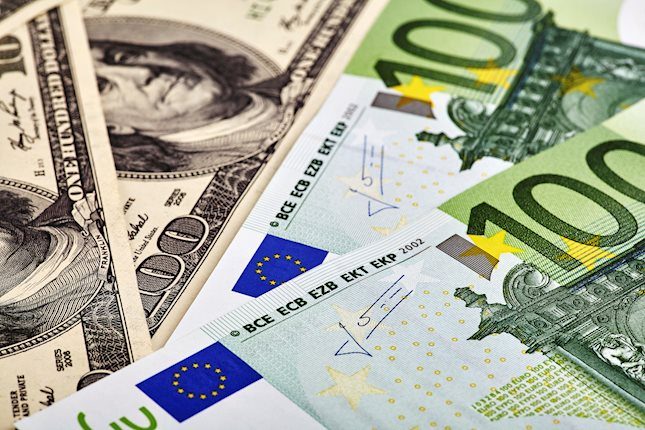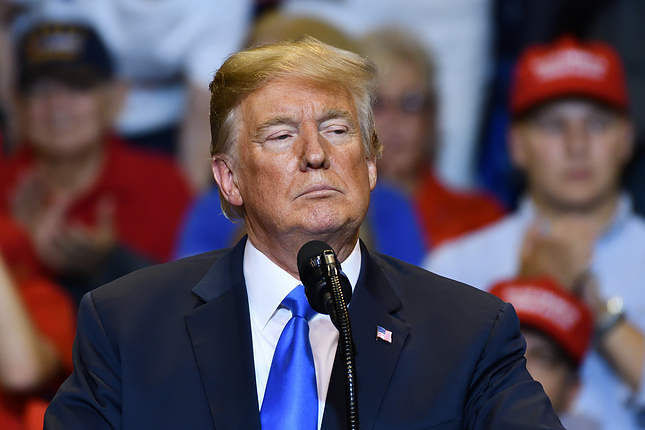- Pound Sterling falls from two-month high around 1.2500 amid easing UK inflation.
- UK inflation decelerated more than expected in October.
- The promise made by UK Sunak for halving inflation to 5.4% by the year-end seems fulfilled.
The Pound Sterling (GBP) faced a sell-off after reaching a two-month high as price pressures in the UK economy softened significantly in October. Annual headline Consumer Price Index (CPI) grew at a slower pace of 4.6%, adding to signs that UK Prime Minister Rishi Sunak will be able to fulfill his promise of halving inflation by the year-end. Meanwhile, the UK Producer Price Index (PPI) fell, suggesting that goods producers were forced to cut prices at factory gates due to a poor demand outlook.
The commentary came from UK Chancellor Jeremy Hunt after the release of the inflation data in which he acknowledged the beginning of victory against inflation. He added that we can look to the next stage of the plan for long-term growth.
Some recovery in the US Dollar after the release of the US Retail Sales has weighed pressure on the GBP/USD pair. The Cable has surrendered decent gains, which were gained by a soft US inflation report. The broader appeal for risk-perceived assets improved after easing consumer inflation in the US economy, which elevated hopes of no more interest rate increases from the Federal Reserve (Fed).
Daily Digest Market Movers: Pound Sterling drops as US Dollar attempts recovery
- Pound Sterling faces some selling pressure as the UK Office for National Statistics (ONS) has reported that inflation has eased significantly in October.
- The appeal for the Pound Sterling is upbeat as the market sentiment is bullish amid easing price pressures in the US economy.
- Monthly headline inflation in the UK economy remained stagnant in October while investors anticipated a nominal growth of 0.1%. In September, headline inflation grew strongly by 0.5%. The annual headline CPI rose by 4.6%, slower than the consensus of 4.8% and the former reading of 6.7%.
- This indicates that the promise made by UK Prime Minister Rishi Sunak to halve inflation to 5.4% by the year-end has been fulfilled. Sunak promised to halve inflation in January when price growth was near 10.7%.
- The core CPI that excludes volatile food and Oil prices has softened to 5.7% against expectations of 5.8% and the prior reading of 6.1%.
- It is worth noting that the annual Producer Price Index (PPI) deflated in October, which indicates that firms have reduced prices of goods and services offered at factory gates due to poor demand from domestic and overseas markets.
- The monthly Retail Price Index surprisingly contracted by 0.2%.
- A record decline in price pressures in October conveys that the Bank of England (BoE) may not need to raise interest rates further.
- On Tuesday, BoE Chief Economist Huw Pill cited that further policy tightening is not needed to tame inflationary pressures but the BoE is prepared if needed. He further added that the BoE must focus on inflation, not tackling other issues in the UK economy.
- BoE policymakers could discuss cutting rates earlier as the UK labor market is facing the wrath of higher interest rates.
- On Tuesday, the UK laborforce shed workers for the third time in a row as firms have witnessed a sharp decline in new business. The Unemployment Rate remained unchanged at 4.2%.
- UK employers are pessimistic about the near-term environment as they expect the BoE to keep interest rates higher at least until mid-2024.
- Meanwhile, The US Dollar Index (DXY) finds some support near 104.00 after a nominal decline in the US Retail Sales data. Monthly Retail Sales contracted by 0.1% in October while investors projected a decline by a higher pace of 0.3%. In the previous month, the economic data grew by 0.7%.
- The US Producer Price Index (PPI) report for October remained softer than expectations. Monthly headline PPI deflated by 0.5% against estimates of 0.1% expansion due to lower gasoline prices. In the same period, the core PPI remained stagnant.
- Investors expect that the rate-tightening campaign by the Federal Reserve (Fed) has concluded due to easing prices pressures.
- While US inflation softened in October, Richmond Fed Bank President Thomas Barkin said that the central bank is making real progress on inflation but is not convinced inflation is on a smooth glide path to 2%. Barkin warned that the Fed needs to do more to curb demand and inflation.
Technical Analysis: Pound Sterling drops to near 1.2430
Pound Sterling faces nominal pressure from a two-month high near the crucial resistance of 1.2500. The broader appeal remains upbeat due to improved market sentiment. The GBP/USD pair rallies after testing the breakout region of the symmetrical triangle formed on a daily time frame. The Cable has climbed above the 200-day Exponential Moving Average (EMA), which indicates that the near-term demand has turned upbeat.
BoE FAQs
What does the Bank of England do and how does it impact the Pound?
The Bank of England (BoE) decides monetary policy for the United Kingdom. Its primary goal is to achieve ‘price stability’, or a steady inflation rate of 2%. Its tool for achieving this is via the adjustment of base lending rates. The BoE sets the rate at which it lends to commercial banks and banks lend to each other, determining the level of interest rates in the economy overall. This also impacts the value of the Pound Sterling (GBP).
How does the Bank of England’s monetary policy influence Sterling?
When inflation is above the Bank of England’s target it responds by raising interest rates, making it more expensive for people and businesses to access credit. This is positive for the Pound Sterling because higher interest rates make the UK a more attractive place for global investors to park their money. When inflation falls below target, it is a sign economic growth is slowing, and the BoE will consider lowering interest rates to cheapen credit in the hope businesses will borrow to invest in growth-generating projects – a negative for the Pound Sterling.
What is Quantitative Easing (QE) and how does it affect the Pound?
In extreme situations, the Bank of England can enact a policy called Quantitative Easing (QE). QE is the process by which the BoE substantially increases the flow of credit in a stuck financial system. QE is a last resort policy when lowering interest rates will not achieve the necessary result. The process of QE involves the BoE printing money to buy assets – usually government or AAA-rated corporate bonds – from banks and other financial institutions. QE usually results in a weaker Pound Sterling.
What is Quantitative tightening (QT) and how does it affect the Pound Sterling?
Quantitative tightening (QT) is the reverse of QE, enacted when the economy is strengthening and inflation starts rising. Whilst in QE the Bank of England (BoE) purchases government and corporate bonds from financial institutions to encourage them to lend; in QT, the BoE stops buying more bonds, and stops reinvesting the principal maturing on the bonds it already holds. It is usually positive for the Pound Sterling.
Information on these pages contains forward-looking statements that involve risks and uncertainties. Markets and instruments profiled on this page are for informational purposes only and should not in any way come across as a recommendation to buy or sell in these assets. You should do your own thorough research before making any investment decisions. FXStreet does not in any way guarantee that this information is free from mistakes, errors, or material misstatements. It also does not guarantee that this information is of a timely nature. Investing in Open Markets involves a great deal of risk, including the loss of all or a portion of your investment, as well as emotional distress. All risks, losses and costs associated with investing, including total loss of principal, are your responsibility. The views and opinions expressed in this article are those of the authors and do not necessarily reflect the official policy or position of FXStreet nor its advertisers. The author will not be held responsible for information that is found at the end of links posted on this page.
If not otherwise explicitly mentioned in the body of the article, at the time of writing, the author has no position in any stock mentioned in this article and no business relationship with any company mentioned. The author has not received compensation for writing this article, other than from FXStreet.
FXStreet and the author do not provide personalized recommendations. The author makes no representations as to the accuracy, completeness, or suitability of this information. FXStreet and the author will not be liable for any errors, omissions or any losses, injuries or damages arising from this information and its display or use. Errors and omissions excepted.
The author and FXStreet are not registered investment advisors and nothing in this article is intended to be investment advice.
Recommended content
Editors’ Picks

EUR/USD hovers around 1.0800 on Fed's decision
EUR/USD returned to the 1.0800 price zone after the Federal Reserve announced its decision to cut the benchmark interest rate by 25 bps as widely anticipated. Chair Jerome Powell's remarks put mild pressure on the US Dollar.

USD/JPY retreats from weekly highs as FOMC delivers 25 bps rate trim
USD/JPY hovers around 153.80 after the Fed broadly met market expectations on November's rate call. The Fed delivered a follow-up quarter-point cut on Thursday; markets now bet on the odds of a December three-peat.

Gold regains $2,700 with Fed’s announcement
Gold extends its recovery following Wednesday's sharp decline and trades above $2,700, as the US Dollar eases following the Federal Reserve's decision to cut rates by 25 bps. Powell's speech revolved around Trump's victory.

Ethereum Price Forecast: ETH eyes $3,366 as open interest growth could fuel quest for new all-time high
Ethereum (ETH) is up nearly 8% on Thursday and could reach a new all-time high before year-end following increasing investor demand for the top altcoin. This is visible in ETH's open interest growth and increasing Ethereum exchange-traded funds (ETF) inflows.

Outlook for the markets under Trump 2.0
On November 5, the United States held presidential elections. Republican and former president Donald Trump won the elections surprisingly clearly. The Electoral College, which in fact elects the president, will meet on December 17, while the inauguration is scheduled for January 20, 2025.

Best Forex Brokers with Low Spreads
VERIFIED Low spreads are crucial for reducing trading costs. Explore top Forex brokers offering competitive spreads and high leverage. Compare options for EUR/USD, GBP/USD, USD/JPY, and Gold.